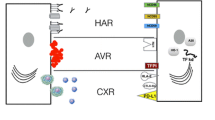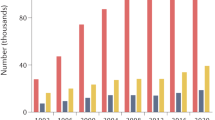Abstract
Understanding the molecular bases of xenograft rejection is one of the highest priorities in the xenotransplantation field. This information is needed for the successful development of genetic modifications of the animal source of xenogeneic cells and organs that prevent rejection. Furthermore, the identification of physiological incompatibilities in the xenogeneic setting is also necessary for developing the appropriate strategies that allow long-term xenograft function. As the pig is the species of choice for the development of the majority of xenogeneic applications, the cloning of pig genes or cDNA is a key step to elucidate the interactions of pig and human molecules. In addition, there are currently multiple bioinformatic tools which facilitate the study in silico of protein structures, molecular interactions, and docking sites. Thus, we describe a basic cloning method that comprises total RNA extraction, reverse transcription (RT), and polymerase chain reaction (PCR) for cDNA amplification and include some links for databases and bioinformatics tools available on the Internet for the subsequent analyses and predictions. Finally, some procedures of protein expression and analysis of protein interactions by surface plasmon resonance (SPR) are described for elucidating the molecular mechanisms of xenograft function and rejection.
Access this chapter
Tax calculation will be finalised at checkout
Purchases are for personal use only
Similar content being viewed by others
References
Ekser B, Li P, Cooper DKC (2017) Xenotransplantation: past, present, and future. Curr Opin Organ Transplant 22:513–521. https://doi.org/10.1097/MOT.0000000000000463
Yamada K, Sykes M, Sachs DH (2017) Tolerance in xenotransplantation. Curr Opin Organ Transplant 22:522–528. https://doi.org/10.1097/MOT.0000000000000466
Cooper DK, Ezzelarab MB, Hara H et al (2016) The pathobiology of pig-to-primate xenotransplantation: a historical review. Xenotransplantation 23:83–105. https://doi.org/10.1111/xen.12219
Butler JR, Martens GR, Estrada JL et al (2016) Silencing porcine genes significantly reduces human-anti-pig cytotoxicity profiles: an alternative to direct complement regulation. Transgenic Res 25:751–759. https://doi.org/10.1007/s11248-016-9958-0
Cooper DK, Ekser B, Ramsoondar J, Phelps C, Ayares D (2016) The role of genetically engineered pigs in xenotransplantation research. J Pathol 238:288–299. https://doi.org/10.1002/path.4635
Wang Q, Shi N, Shang Y et al (2017) Comprehensive molecular characterization of a transgenic pig expressing hCD46 gene. Gene 626:376–385. https://doi.org/10.1016/j.gene.2017.05.057
Groenen MA, Archibald AL, Uenishi H et al (2012) Analyses of pig genomes provide insight into porcine demography and evolution. Nature 491:393–398. https://doi.org/10.1038/nature11622
Uribe-Herranz M, Casinghino SR, Bosch-Presegué L, Fodor WL, Costa C (2011) Identification of soluble and membrane-bound isoforms of porcine tumor necrosis factor receptor 2. Xenotransplantation 18:131–146. https://doi.org/10.1111/j.1399-3089.2011.00634.x
Bruel T, Guibon R, Melo S et al (2010) Epithelial induction of porcine suppressor of cytokine signaling 2 (SOCS2) gene expression in response to Entamoeba histolytica. Dev Comp Immunol 34:562–571. https://doi.org/10.1016/j.dci.2009.12.017
Zismann V, Nourbakhsh M (2014) Rapid mapping of RNA 3′ and 5′ ends. Methods Mol Biol 1182:19–25. https://doi.org/10.1007/978-1-4939-1062-5_2
Nygard A-B, Jørgensen CB, Cirera S, Fredholm M (2010) Investigation of tissue-specific human orthologous alternative splice events in pig. Anim Biotechnol 21:203–216. https://doi.org/10.1080/10495398.2010.497729
Doolittle RF (2010) The roots of bioinformatics in protein evolution. PLoS Comput Biol 6:e1000875
Gao FS, Xu CB, Long YH, Xia C (2009) Secondary structure and 3D homology modeling of swine leukocyte antigen class 2 (SLA-2) molecules. Immunobiology 214:475–482. https://doi.org/10.1016/j.imbio.2008.11.001
Uribe-Herranz M, Costa C (2012) Cloning and expression analyses of pig genes. Methods Mol Biol 885:17–31. https://doi.org/10.1007/978-1-61779-845-0_2
Uribe-Herranz M, Costa C (2012) Basic analyses of proteins of interest for xenotransplantation. Methods Mol Biol 885:33–45. https://doi.org/10.1007/978-1-61779-845-0_3
Seebach JD, Comrack C, Germana S et al (1997) HLA-Cw3 expression on porcine endothelial cells protects against xenogeneic cytotoxicity mediated by a subset of human NK cells. J Immunol 159:3655–3661
Otamiri M, Nilsson KG (1999) Analysis of human serum antibody-carbohydrate interaction using biosensor based on surface plasmon resonance. Int J Biol Macromol 26:263–268
Acknowledgments
This work was supported by the European Union Seventh Framework Programme (FP7/2007–2013) under Grant Agreement no. 603049 (TRANSLINK), the SLT002/16/00445 grant funded by the Department of Health of the Generalitat de Catalunya, Ministerio de Economía y Competitividad-ISCiii (PI15/00181), and Fundació La Marató de TV3 (2007-082430), all granted to CC, and cofunded by FEDER funds, a way to build Europe. IDIBELL benefits from the support of CERCA. S.G.K. was additionally supported by an IDIBELL summer internship and M.U.-H. by an IDIBELL fellowship.
Author information
Authors and Affiliations
Corresponding author
Editor information
Editors and Affiliations
Rights and permissions
Copyright information
© 2020 Springer Science+Business Media, LLC, part of Springer Nature
About this protocol
Cite this protocol
Kuguel, S.G., Uribe-Herranz, M., Costa, C. (2020). Tools for Molecular Studies in Xenotransplantation. In: Costa, C. (eds) Xenotransplantation. Methods in Molecular Biology, vol 2110. Humana, New York, NY. https://doi.org/10.1007/978-1-0716-0255-3_2
Download citation
DOI: https://doi.org/10.1007/978-1-0716-0255-3_2
Published:
Publisher Name: Humana, New York, NY
Print ISBN: 978-1-0716-0254-6
Online ISBN: 978-1-0716-0255-3
eBook Packages: Springer Protocols




